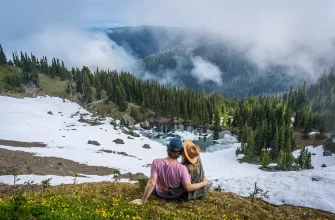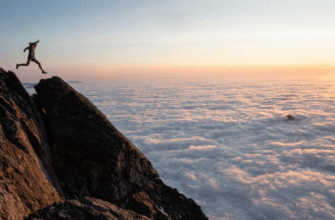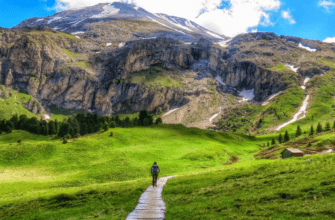In Washington State, spring may be a thrilling time to go hiking. The snow is melting, the bees are humming, and the flowers are beginning to emerge.

That’s why we decided to compile the ideal list of the best spring hikes and hiking trails in Washington. Many simple and secure routes on our list are accessible during the spring hike. Enjoy!
- Best spring hikes in Washington: necessary tips
- When does spring arrive in Washington?
- What to wear?
- Essential equipment for a spring hike
- When can you view Washington’s wildflowers?
- Can you hike in Washington in May?
- Washington State hiking parking pass
- Care for wild landscapes
- Best spring hikes in Washington: our top picks
- Rattlesnake Ledge
- Dog Mountain
- Coyote Wall
- Hall of Mosses
- Barclay Lake
- Pipestone Canyon & Ridge loop trail
- Stacker Butte
- Ancient Lakes
- Hole-In-The-Wall
- Oyster Dome
- Lake 22
- Teneriffe Falls
- Bridal Veil Falls and Lake Serene
- Conclusion
Best spring hikes in Washington: necessary tips
When does spring arrive in Washington?
Given that snow can occasionally last into June, it can be difficult to determine when the spring season in Washington is genuinely in effect. However, spring normally arrives in Washington between March and May.

By now, there isn’t much snow in the lower elevations, but there will probably be snow in the mountains until the beginning of summer. Temperatures begin to rise in the spring and typically range from 40°F to 70°F.
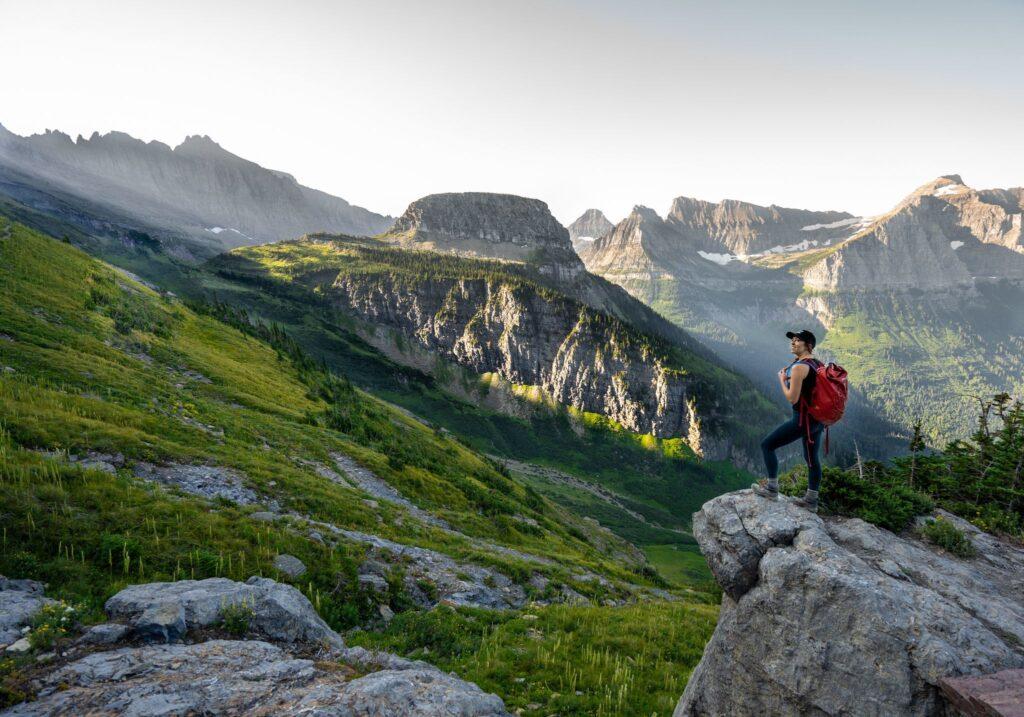
When going on a hike, be sure to account for the fact that there will still be a lot of rain. Mid-April is when the wildflowers begin to bloom, while early March is when the cherry blossom trees do.
What to wear?
When planning a spring hike and heading into the mountains, it’s always vital to consider your layering options, but this is especially true in the spring because you never know what to expect!
Our preferred tip is to peruse the trail reports on the Washington Trails Association website.
Regardless of the reports, it’s always advisable to be ready for unforeseen bad weather.

These outfit suggestions are the greatest for your spring hike.
Wearing clothing that wicks away moisture will keep you warm and help you stop sweating.
Socks made of merino wool. These socks keep your feet toasty in the winter and cool in the summer.

Wearing sturdy shoes with hard soles is essential because many of the treks are rocky.
A rain jacket is essential because it rains a lot in the Pacific Northwest.
Pack a thick jacket so you can put it on if you start to get cold because alpine temperatures can drop quickly.
Essential equipment for a spring hike
Best spring hikes in Washington require some serious preparation.
Carry microspikes for traction because it’s still possible for snow to be present on the ground in the spring.
Microspikes and trekking poles are both useful in the snow.
Sunscreen. Getting sunburned might be made simpler at higher heights.
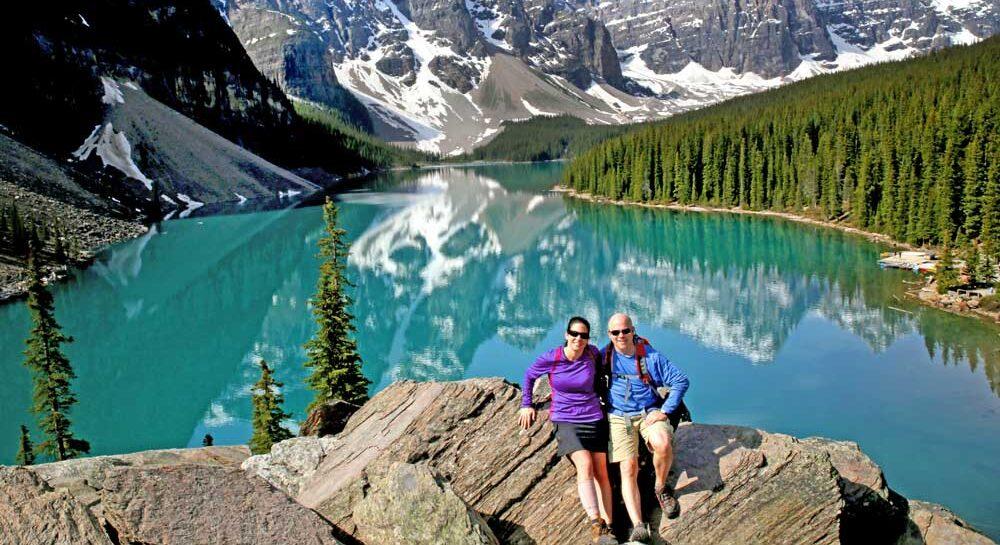
Water bladder. Be sure to bring extra water with you on your hike.
When can you view Washington’s wildflowers?
The abundance of wildflowers in Washington State at this time of year is one of the finest aspects of hiking, but some of them have a short lifespan.
To read trip reports every day, we prefer to keep a list of the treks that we know will have wildflowers and that we want to see.
The list also includes the URL for the hike’s WTA page.

By doing so, we’ll be able to start reading accounts of the wildflowers from those who have just finished the trail, along with their photographs.
Can you hike in Washington in May?
You should go from mid-April to early May if you want to see most of Washington’s wildflowers. Depending on the season and the weather, this will change, but generally speaking, this is the best time.
Remember, though, that wildflowers don’t really begin to bloom in higher elevations until July or August. Because it’s spring, a lot of people assume that wildflowers are everywhere, but until about June, many walks up there will still be covered in snow.
Washington State hiking parking pass
The majority of these best spring hikes in Washington require a National Park Pass, Discover Pass, or the Northwest Forest Pass. Because the America The Beautiful Pass includes both the National Park Pass and the Northwest Forest Pass, we strongly advise purchasing one. In Washington, the Discover Pass is valid in all state parks.
Care for wild landscapes
We firmly believe that without a relationship with nature, individuals are much less likely to speak up in favor of and save the few surviving natural areas on our planet. We’ve decided to share a few of our favorite spring treks in Washington as a result.
There have been more individuals trekking the trails in Washington during spring hikes this year than last.
Although we are pleased that more people are enjoying the outdoors, it saddens us that the trails are being desecrated in the process.
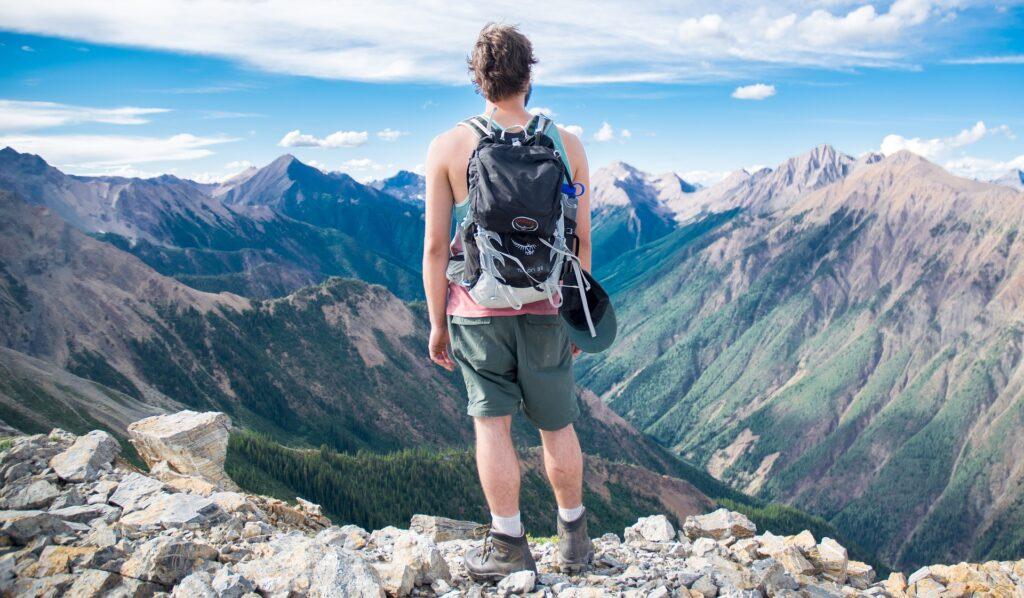
We sincerely hope that by sharing those stunning locations, we might encourage a sense of ownership and care for our wild landscapes.
Best spring hikes in Washington: our top picks
Rattlesnake Ledge
Distance: 5.3 miles total, round trip
Elevation gain: 1,459 feet
Rattlesnake Ledge is among the favorite spring hikes in Washington State. People prefer this route and the surrounding mountains in the early spring because it may be finished throughout most of the year.

Since the Rattlesnake Ledge can get somewhat crowded, we advise hiking at dusk or during the workweek. In either case, there’s a solid reason why this climb is regarded as one of the best. The views of the lake and the mountains in the area are breathtaking.
Dog Mountain
Distance: 6 miles
Elevation gain: 2,800 feet
Location: Columbia River Gorge
Pass required: Northwest Forest Pass
We wouldn’t be able to include the Dog Mountain trail on a list of our favorite Washington hikes to see wildflowers. One of the most popular hikes in the Columbia River Gorge is through this magnificent area of Dog Mountain, which is home to waterfalls and wildflowers.

A wooded section of Dog Mountain is where the beautiful trail begins its ascent, but the remainder of the trip is through open terrain. Panorama views are available while fields of vivid yellow wildflowers surround you.

And then there is the historic Columbia River highway. The magnificent view of the Columbia River Gorge from the top makes the arduous journey worthwhile despite the windy and precarious last section of the ascent. You may either go back the way you came or take the 0.9-mile Augspurger Mountain Trail, which is less taxing on your knees.
You need permission to hike over the weekend because of the popularity of spring hiking in Dog Mountain and the Columbia River, which causes the paths to be rather congested. Consider purchasing a parking pass because there isn’t much space for parking at the trailhead.
Coyote Wall
Distance: 7 miles
Elevation gain: 1,750 feet
Few things make us happier than wildflowers. Sadly, you frequently have to wait until far into July in Washington to see any flowers in the mountains.
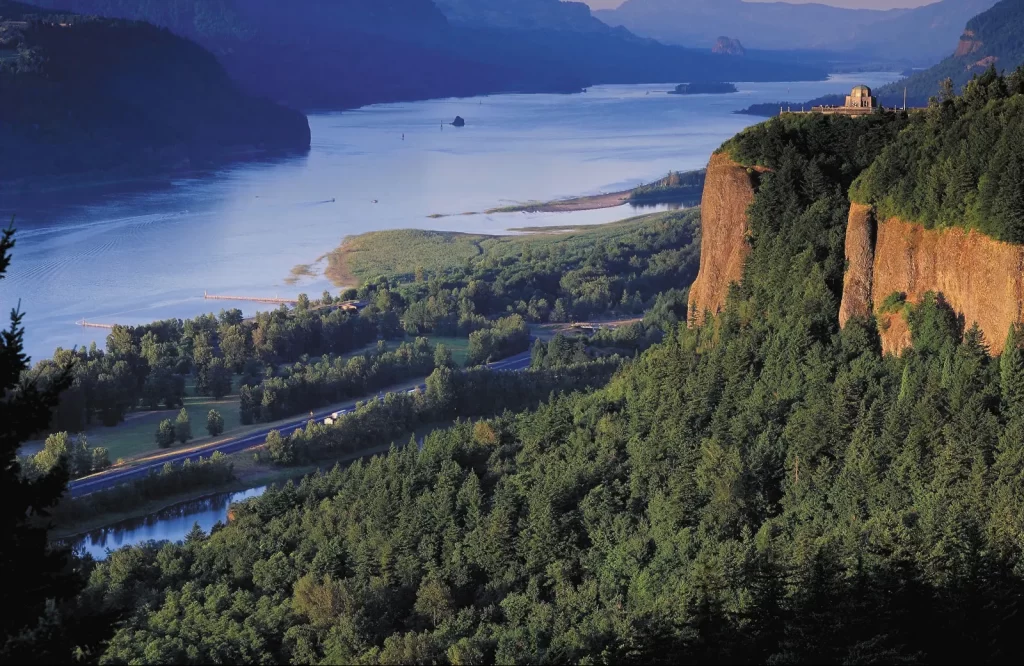
But don’t give up! Much earlier in the season, you can get your wildflower fix on some fantastic low-lying routes like Coyote Wall. On the Washington side of the Columbia River Gorge, Coyote Wall is yet another stunning hiking trail.
Large sections of the trail are covered with magnificent displays of wildflowers from surrounding mountains from late May through April; balsamroot and lupin are particularly common. But it’s not just about the flowers. Great views of Mount Hood may be seen in the distance, peaking above the foothills.
Although the official route may not always be obvious, do your best to stay away from any parts that have been closed off for restoration. Additionally, it’s common to trek Coyote Wall in a loop.
You always know where you are because of how open the landscape is. However, there are a lot of trail intersections, and even though they all appear to lead to the same general location, we discovered that we frequently checked our GPS map for reassurance. Also, the service was surprisingly good throughout the entire hike.

Don’t forget to pack lots of water, too! The entire Coyote Wall Trail is uphill (until you turn around), and the sun never sets. This is not your average hike in Washington that ascends through miles of woodland before emerging at a viewpoint.
The entire trail is in the open, leaving you vulnerable to the weather. But keep your head up! That also means that you get to see beautiful scenery the whole time!
Hall of Mosses
Distance: 1.1 miles
Elevation gain: 75 feet
Location: Olympic Peninsula
Pass Required: National Park Pass
On a gorgeous spring day on the Olympic Peninsula, Olympic National Park, the Hall of Mosses trek goes well with Sol Duc Falls.
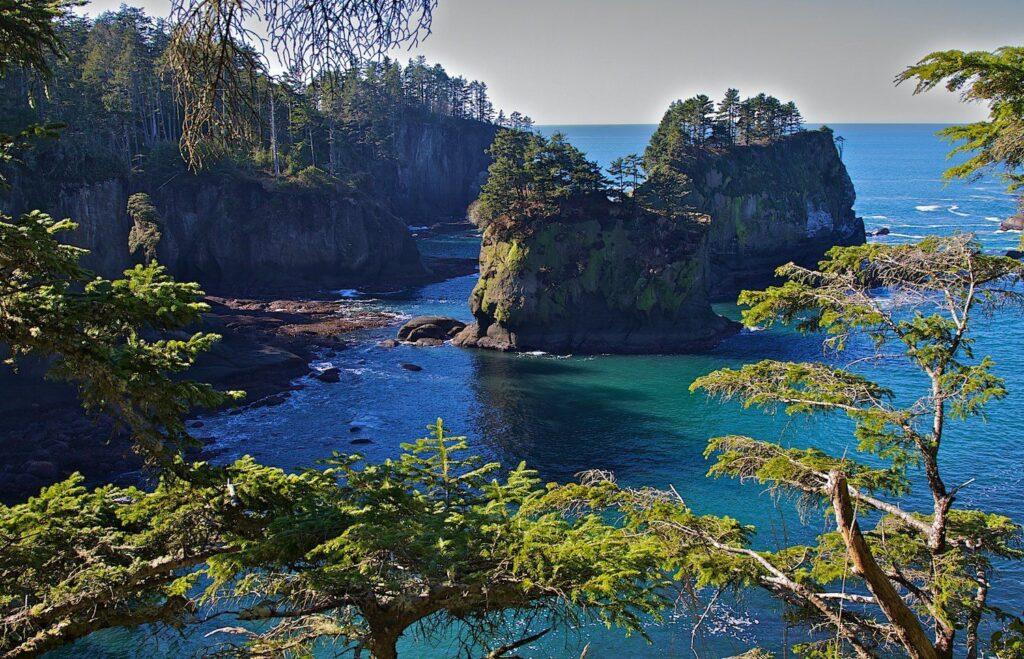
The lush, mossy forests that envelop Washington are one of our favorite aspects of the state. This is beautifully illustrated in the Hall of Mosses, especially in the spring when the moisture in the air produces the greenest hues.
There are markers throughout the trail that will teach you something about the area. Plus, the minimal elevation gain makes it an easy hike.
Watch out for banana slugs crawling on the forest floor when exploring Olympic National Park!
Barclay Lake
Distance: 4.3 miles
Elevation gain: 400 feet
The best spring hiking walk in Washington for families is a short hike that will take you to a picturesque lake in the mountains. To get to the lake, you must stroll alongside the lovely Barclay Creek through the forest.
You’ll get stunning views of the mountains behind the lake, views of the kind that typically require climbing a mountain!
Barclay Lake is best visited in the spring because the summer months can be somewhat crowded. Give it a try; it’s one of the best trails in the state for novices to explore!
However, because it is located in the Cascade Range, there may be snow on it in some parts of the spring, therefore it is a good idea to pack microspikes.
Pipestone Canyon & Ridge loop trail
Distance: 9 miles
Elevation gain: 1,850 feet
We like to travel to the Methow Valley when it’s raining on Washington’s western side. As luck would have it, neither east nor west of the Cascades could avoid the rain on this particular day.
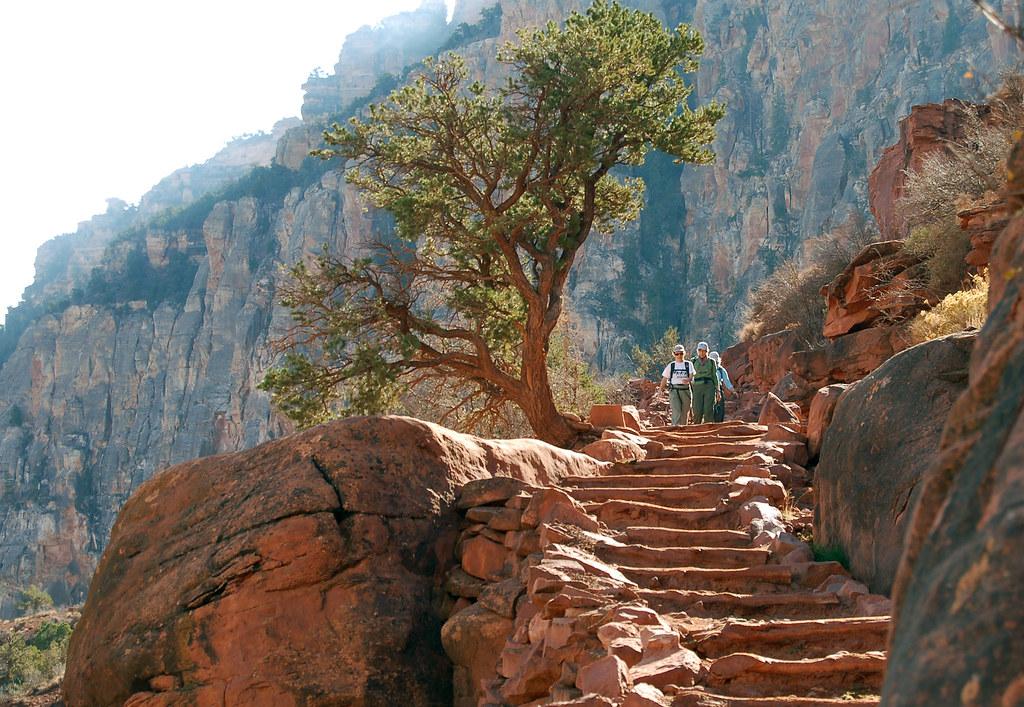
However, there is merit in keeping such viewpoints to oneself. And no less than over Memorial Day weekend! The expansive and breathtaking vistas from Pipestone Canyon Ridge Trail are magnificent, but if you visit in April or the first half of May, the wildflowers are the real stars.
You can take the ridge route as far as you desire before turning around, or you can combine it with the canyon trail to create a stunningly varied 9-mile loop.
For your information, on occasion, the Rim Trail is shut down from April 1 to May 15 due to Golden Eagle nesting. By phoning the Washington Department of Fish and Wildlife, you can inquire about the trail’s condition.
Please respect the Golden Eagles and their capacity for reproduction by taking the Lester Road or lower Pipestone Canyon route if the Rim Trail is blocked, or by staying at least a quarter mile away from the Pipestone Canyon Rim in the early spring.
Stacker Butte
Distance: 5 miles
Elevation gain: 1,150 feet
The Columbia Hills Natural Area Preserve’s walk is the one to choose if you want to see the most diversity of wildflowers. Everything from lupine and balsamroot to paintbrush blooms and much more may be seen.
The open space allows you to take in views of the park’s undulating hills and flower-filled fields, and the wide path makes it simple to follow. The mysterious buttercup is one of the rare endemic flower species that can be found in this botanical preserve.
Given that the trail has limited shade and is best enjoyed in the cooler spring months, this is one of Washington State’s better spring walks. Dogs are not permitted on the Stacker Butte trail because it is located on a preserve, and hikers are asked to stay on the track.
Ancient Lakes
Distance: 4.6 miles, roundtrip
Elevation gain: 288 feet
Looking for a southwestern vibe? In the spring, visit Ancient Lakes! Over 12 miles of paths encircle the desert in this magnificent location, making for one of our most straightforward walks to date.
Additionally, it’s a fantastic place to backpack. We parked at the Ancient Lakes Lower Trailhead, which requires no permission. The drier part of Washington state, central Washington, is where this route is situated.
Hole-In-The-Wall
Distance: 3.3 miles
Elevation gain: 100 feet
This spring, you should certainly add Hole in The Wall from Rialto Beach to your checklist of interesting hikes in Washington.

You’ll hike along the Pacific Ocean’s shoreline beginning at Olympic National Park’s Rialto Beach. You will be able to see sea life like starfish during low tide.
Additionally, keep a lookout for whales making their annual migration off the shore!
Even though this trip is very simple, you can wind up with wet feet if the sand is moist or if the tide is high. And to see the Hole in the Wall near the finish, you might have to climb rocks or driftwood.
Oyster Dome
Distance: 6.5 miles
Elevation gain: 1,900 feet
The Chuckanut Mountains, just south of Bellingham, are home to Oyster Dome. To get to Oyster Dome, where you may take in magnificent views of Samish Bay, the trail climbs steeply up a series of switchbacks.

The Olympic Mountains and Vancouver Island are visible in the distance. Oyster Dome is a lovely place to see a sunset because of its western exposure, but remember to bring your headlamp for the descent!
Looking forward to a longer hike? If you want to extend your hike, head to North Butte or loop back past Lily Lake and the Samish Overlook.
The unofficial trail on Chuckanut Drive should not be used to reach Oyster Dome, according to the Department of Natural Resources. Instead, tourists should park in the Samish Overlook area.
Lake 22
Distance: 5.4 miles
Elevation gain: 1,350 feet
Even though this is one of the top summer hikes in Washington, you may avoid the crowds by beginning this hike in the spring.

Lake 22 is one of the first alpine lakes to melt because of its low elevation, and it provides hikers with a fantastic spring trail. Check the news first, since you might have snow during the early spring.
The picturesque walk follows the creek up to the lake as it meanders through old-growth and tropical trees. You’ll pass by a gorgeous waterfall on the route. The journey ends with the emerald lake, which offers a breathtaking view of Mount Pilchuck with its fire lookout trail in the distance. Fire lookout can be useful: if you’re tired and want to relax enjoying the view, you can go to the fire lookout and stay there.
Wearing sturdy hiking boots is advised due to the trail’s numerous water crossings and occasionally highly rocky terrain.
Teneriffe Falls
Distance: 5.4 miles, roundtrip
Elevation gain: 1,610 feet
Teneriffe Falls is one of the best waterfall hikes. It is a massive waterfall, making it challenging to take a good photo of it. The region is surrounded by a lot of rocks, and they can be quite slippery. The waterfall is still breathtaking to witness in person.

The track is very level and easy in the beginning, but as you progress toward the center of the hike, the switchbacks appear to go on forever. Teneriffe Falls is finally seen, and if you choose to continue, you can trek up to Mount Teneriffe.
However, take caution because in the spring there can be a lot of snow past the waterfall.
Bridal Veil Falls and Lake Serene
Distance: 8.2 miles
Elevation gain: 2,000 feet
What could be better than combining a waterfall walk and an alpine lake trek close to Seattle? One of the nicest places to trek in spring in Washington is on the Lake Serene route; take a side trip to see the lovely Bridal Veil waterfall. We frequently advise our friends and readers to see this waterfall because it is one of the easiest to get to in the neighborhood.
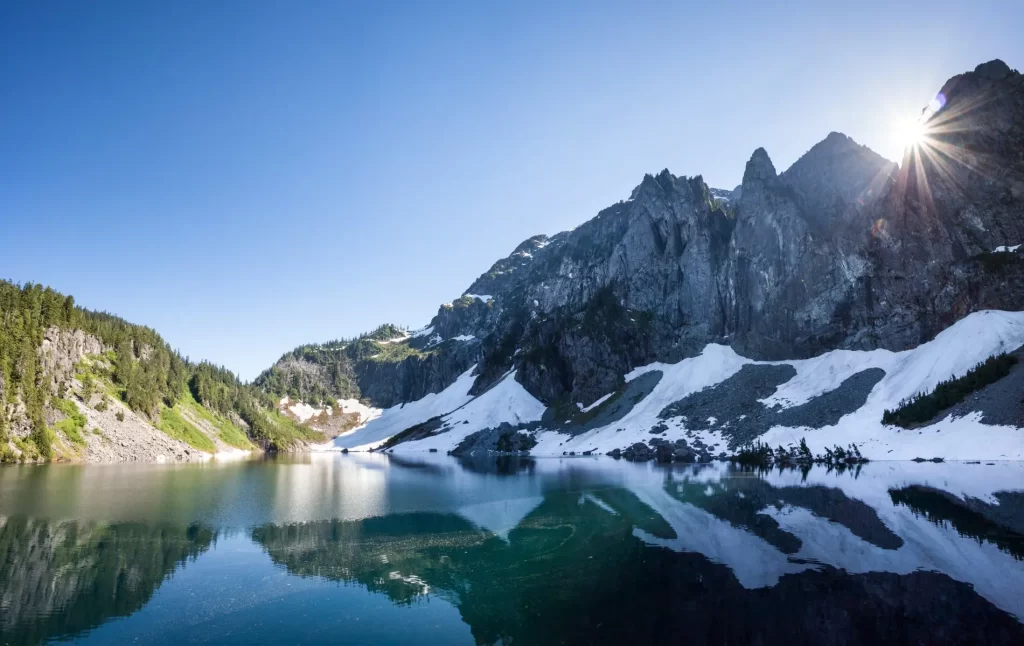
By mid-April, the snow surrounding this lake in the Cascade Alps has typically gone. Just keep in mind that a Northwest Forest Pass is required to park at the trailhead (or you can use your America the Beautiful pass).
Conclusion
In the stunning state of Washington, there are so many amazing treks, many of which are best hiked in the springtime. Our list couldn’t cover all of them.
You may plan your activities for the nicer weather and get outside even before summer arrives with the help of our list of the top spring hikes in Washington!
For more ideas where to travel in spring, please check the Top 15 Best National Parks for Spring Break.
More travel inspiration for American National Parks:
- Sedona or Grand Canyon? [Uncover 6+ Key Aspects and Decide Where to Visit]
- Exploring the Contrasts: Appalachian Mountains vs. Smoky Mountains
- Best fall hikes in Washington state: detailed overview!
- Olympic National Park vs. Mount Rainier: what is the best?
- Hiking the Narrows for beginners: what you need to know for the best hike in the Zion National Park
- Is Big Bend National park safe: your trip guide


![Bryce Canyon vs Grand Canyon [11 aspects] Bryce Canyon vs Grand Canyon 11 aspects](https://griffithparkhiker.com/wp-content/uploads/2024/04/Bryce-Canyon-vs-Grand-Canyon-11-aspects-335x220.jpg)

![Exploring the Contrasts: Appalachian vs. Smoky Mountains [A Comprehensive Comparison 2024] Appalachian Mountains Vs. Smoky Mountains: Top 8 Contrasts](https://griffithparkhiker.com/wp-content/uploads/2024/01/griffithparkhiker-335x220.jpg)
![Sedona or Grand Canyon? [Uncover 6+ Key Aspects and Decide Where to Visit] Sedona Vs Grand Canyon: Choose The Best Destination in 2024](https://griffithparkhiker.com/wp-content/uploads/2024/01/Sedona-vs.-Grand-Canyon-335x220.jpg)
